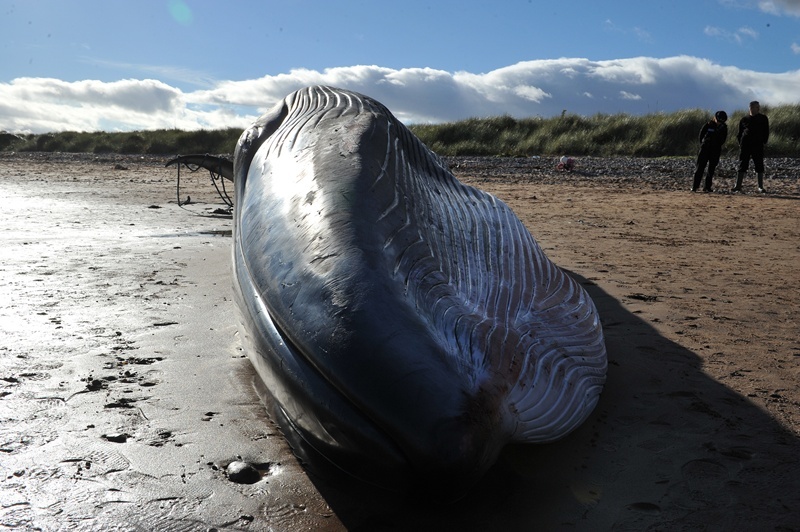Plans to build windfarms off the coast of Tayside and Fife could be responsible for the recent spate of whale beachings, it has been claimed.
The Whale and Dolphin Conservation Society said seismic surveys could be disorientating the whales, causing them to come too close to shore.
The surveys, normally used to search for oil and gas deposits, use sonar to let developers know which parts of the North Sea will be able to support the massive weight of an offshore windfarm.
A number of vessels are, or have been, carrying out the high-tech scans in the Firth of Forth and North Sea in recent weeks.
Earlier this month, 17 pilot whales died after a mass stranding between Anstruther and Pittenweem in the East Neuk of Fife.
A second pod of 24 pilot whales was spotted in shallow water by Cellardyke around the same time but returned to sea without beaching.
The beaching occurred just a day after a minke whale was found dead off Arbroath.
Last week there was another whale fatality when a 40-foot sei whale washed up on the shore near Arbroath.
Charity British Divers Marine Life Rescue, which coordinated efforts to save the pilot whales on September 2, has admitted that sonar poses a risk to many sea animals.
Spokesman Stephen Marsh said there had been a lot of seismic survey activity in the Firth of Forth and that a larger survey by the MV Polarcus Adira had been due to start two hours after the whales were discovered beached in Fife around 7am.
Although Mr Marsh said the surveys could not be blamed directly for the deaths, all the companies carrying out surveys around the Firth of Forth agreed to stop until the whales had safely returned to sea.
He said: “There’s always a concern that any use of sonar at all is going to change the behaviour of animals and may push them off-course.
“In this instance, the Adira contacted us and they said they had not started their survey until after the stranding and switched it off during the rescue attempt.
“Obviously there is a lot of activity and another two companies were in the area at the time. They all worked very closely with us and helped us ensure there wasn’t a second stranding of those animals.”
Seismic surveys use large air guns to create loud, low-frequency sounds underwater. The seabed can then be mapped by timing how long it takes the soundwaves to bounce off the seabed and the direction they travel in. They can take several weeks to complete.
Danny Groves of the Whale and Dolphin Conservation Society said more must be done to limit noise pollution in seas and oceans to protect marine wildlife.
He said: “It is too early to determine what may have caused these recent strandings in Scotland and, if a postmortem is not carried out soon after the death of a stranded whale, the reason for a stranding may never be known.
“Strandings are often the result of an individual being old, sick, or injured in fishing gear or collision with a boat. Sometimes the animals may seek to help a sick or injured individual and become stranded themselves as a result, which is often the case with pilot whales for example.
“However, excessive noise in the water can kill whales and dolphins. They live in a world of water and sound. They feed, communicate and find their way around their world using sound. If you introduce high levels of unnatural noise into that world, then they will suffer.”
He added: “Strandings can occur as a result of underwater noise from high-powered military sonar and seismic surveys for oil and gas deposits. Amazingly, there are currently no accepted international standards regarding noise pollution in our seas.”
Any company wishing to engage in seismic surveying must receive consent from the Department of Energy and Climate Change. To do this they must follow guidelines issued by the Joint Nature Conservation Committee, meaning companies must employ an independent Marine Mammal Observer.
The JNNC says that compliance with their guidelines will reduce the risk of seismic surveys to any endangers species to “negligible levels.”
There are a number of other theories about why the whales have been beaching.
An underwater seaquake on August 30 has been suggested as a reason for the mass beaching in Fife while a solar flare recorded on August 31 has also been put forward as a possible cause.
